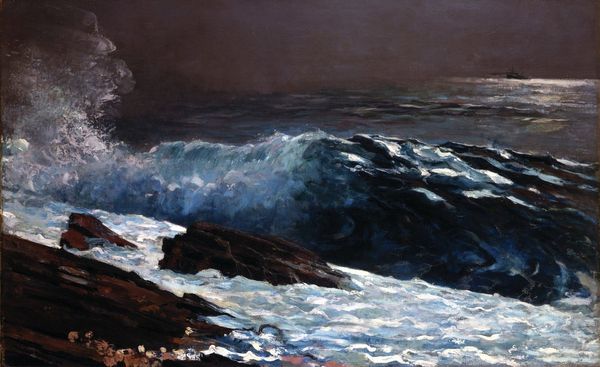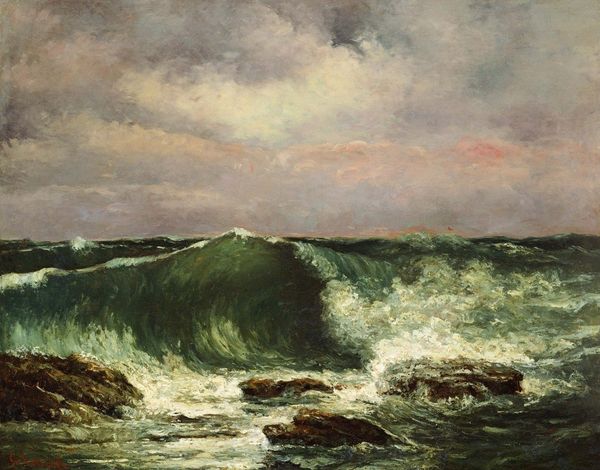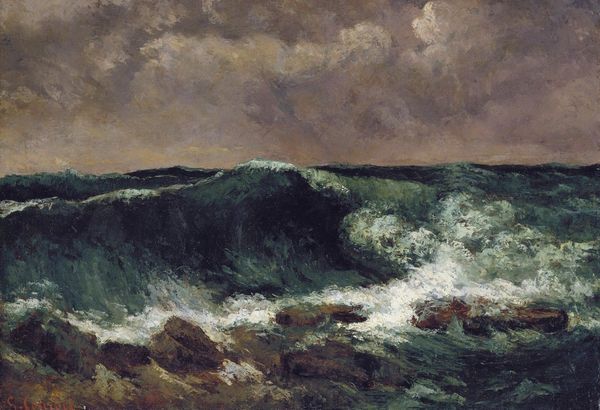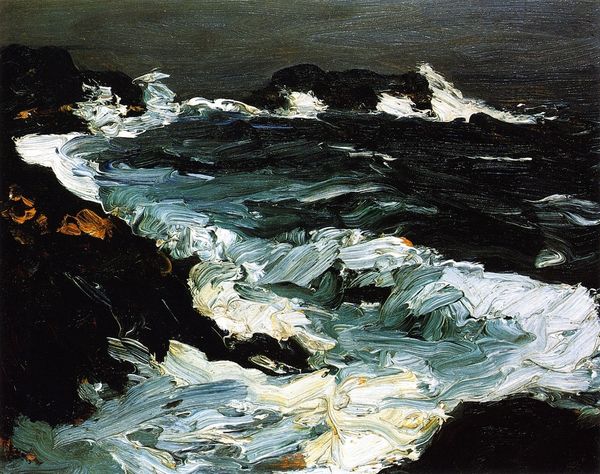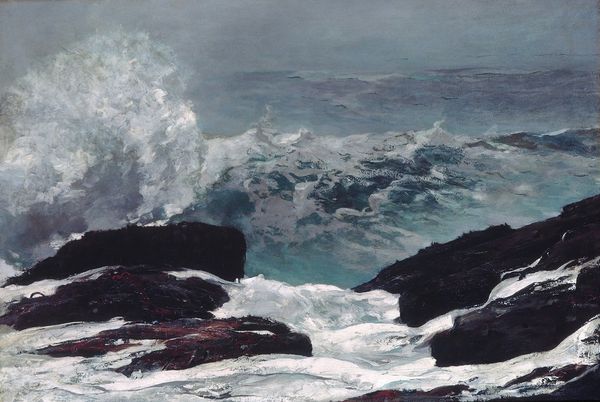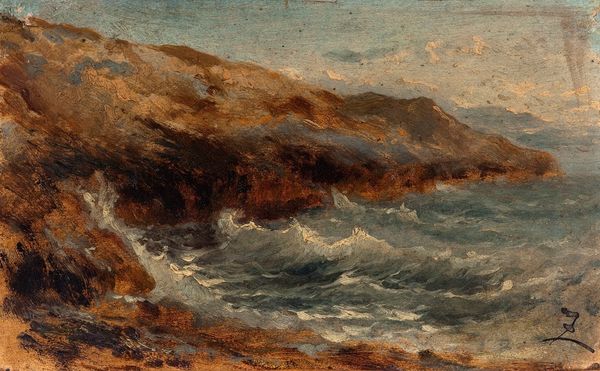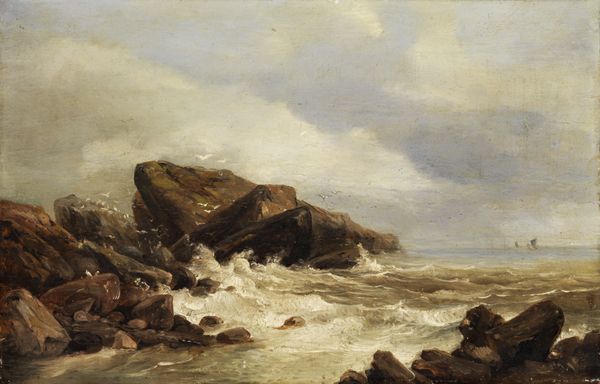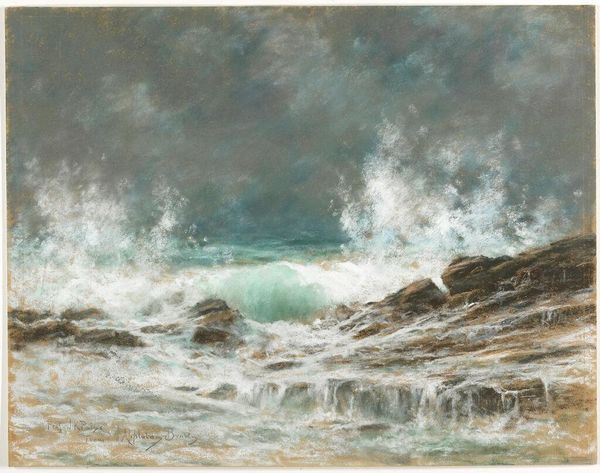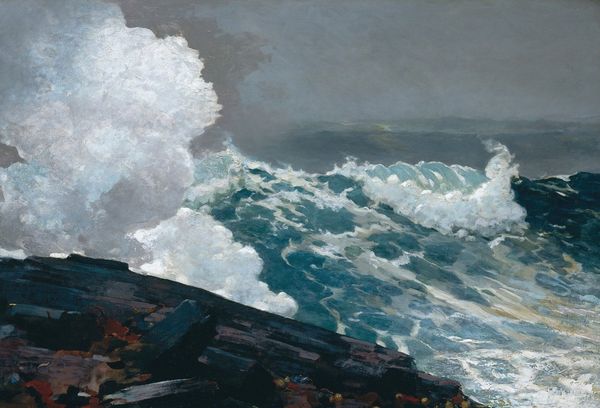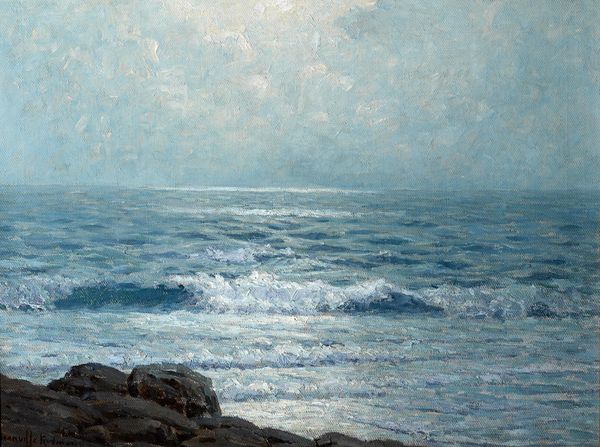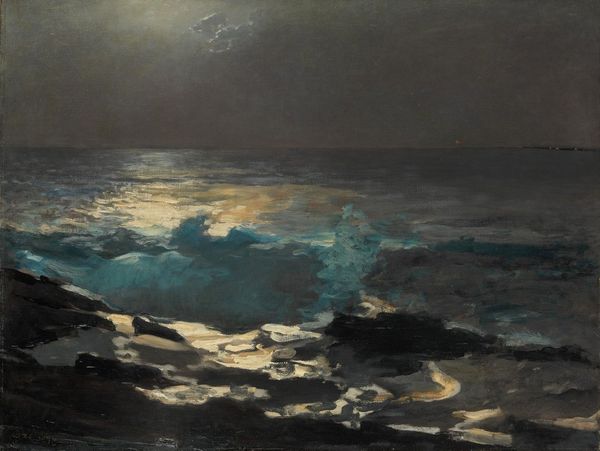
Copyright: Public domain
Editor: Winslow Homer’s "Weatherbeaten," painted in 1894, uses oil paint to depict a stormy seascape. The scene is so intense; I can almost feel the cold spray. What draws your attention most in this piece? Curator: The paint application itself, particularly in rendering the water, fascinates me. Look at the visible brushstrokes and the thick impasto. Consider this alongside the industrial advancements of the late 19th century—the mass production of oil paints in tubes allowed artists like Homer to capture such fleeting moments outdoors. How does the materiality contribute to your sense of the scene’s intensity? Editor: It does make the scene feel raw and immediate, almost like a document of the event instead of just an illustration of it. You can really see the work that went into it. The labor feels evident, I guess? Curator: Precisely! Think about the physical act of painting en plein air in possibly harsh conditions, battling the elements to represent them. Homer's choices, the materials used, and the techniques employed weren't just about aesthetics; they reflect a changing relationship between artists, industry, and nature. Does viewing it this way change your understanding? Editor: Absolutely. I was focusing on the visual impact, but thinking about the means of production and the historical context really deepens my appreciation. I'm starting to understand how this captures a moment in time but also the evolving artistic practices of the era. Thank you! Curator: It’s been my pleasure, by emphasizing materiality, we revealed another story held by the art.
Comments
No comments
Be the first to comment and join the conversation on the ultimate creative platform.
